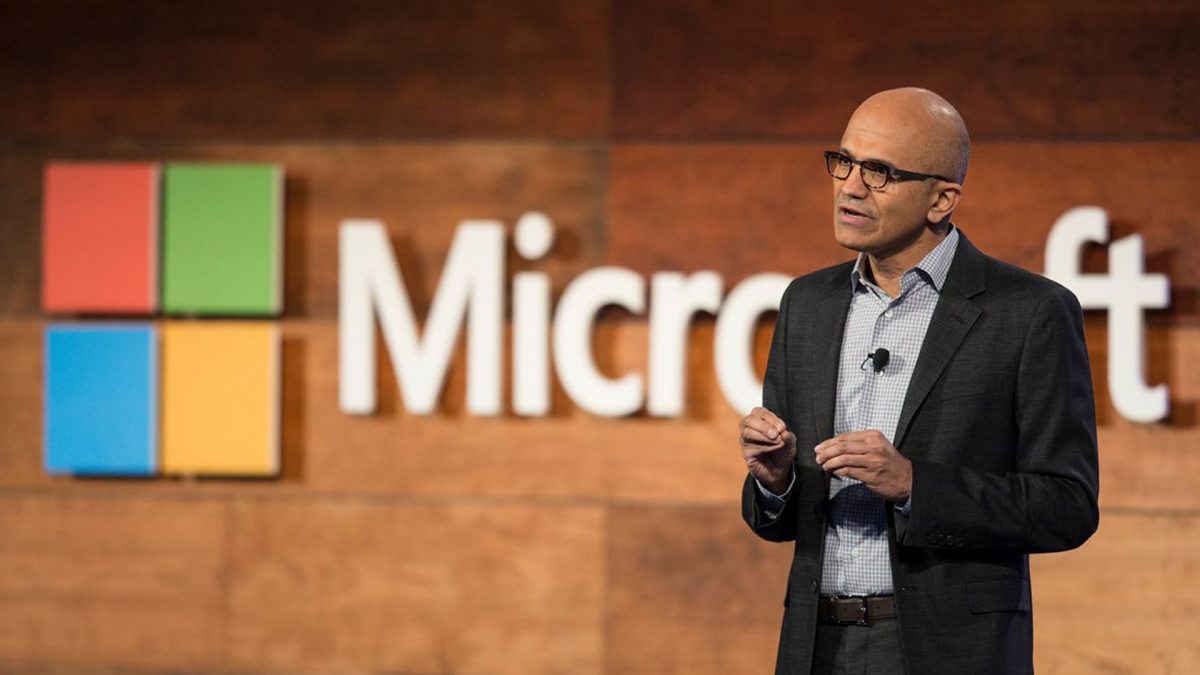Microsoft’s productivity business, which includes the Office suite, LinkedIn, and 365 Copilot, saw 11% growth, more than the 10% expected. Its revenue from the Intelligent Cloud unit, which also includes its Azure business, rose to $28.5 billion in the fourth quarter read more
)
CEO Satya Nadella has integrated AI across various Microsoft products, from the Bing search engine to productivity software like Word. A major chuck of these efforts is through OpenAI, in which Microsoft has invested over $13 billion. Image Credit: Reuters
Microsoft has announced plans to increase its spending on AI infrastructure this fiscal year, despite experiencing slower growth in its cloud business. This move suggests that the returns on substantial investments in AI technology might take longer than Wall Street anticipated.
Following the spending forecast, Microsoft shares initially fell by 7 per cent but later reduced the loss to 4 per cent after a post-earnings call indicated that Azure cloud growth would pick up in the second half of fiscal 2025.
Tech giants are heavily investing in data centres to leverage the generative AI boom. For instance, Alphabet, Google’s parent company, recently indicated that its capital spending would remain high for the rest of the year.
In Microsoft’s case, capital spending increased by 77.6 per cent to $19 billion in the fiscal fourth quarter ending June 30, with most expenditures directed towards cloud and AI-related investments. For the entire fiscal year 2024, capital spending amounted to $55.7 billion.
Microsoft’s Chief Financial Officer, Amy Hood, stated that the spending is necessary to meet the demand for AI services and emphasized that these investments are expected to generate returns over 15 years or more. However, investors, who have driven up Microsoft’s stock by nearly 25 per cent in the past year due to AI optimism, were disappointed by the slower growth of Azure.
Microsoft forecasted that Azure would grow by 28 per cent to 29 per cent on a constant currency basis in the July-September quarter, slightly below the estimated 29.7 per cent growth. In the quarter ending June 30, Azure grew by 29 per cent, which fell short of the 30.6 per cent expectations and marked a deceleration from the previous quarter.
Daniel Morgan, a senior portfolio manager at Synovus Trust, noted that investors expect significant revenue increases following such large expenditures and lack patience for slower returns.
Despite the overall slowdown, AI services contributed more to the revenue increase in the June quarter, accounting for 8 percentage points, up from 7 percentage points in the previous quarter. While Microsoft does not disclose the exact revenue for Azure, the segment is crucial for the company’s AI-related growth.
CEO Satya Nadella highlighted that Azure AI is now utilized by over 60,000 customers, with usage up nearly 60 per cent year-over-year, and the average spending per customer is also increasing.
Nadella has integrated AI across various Microsoft products, from the Bing search engine to productivity software like Word. A major chuck of these efforts is through OpenAI, in which Microsoft has invested over $13 billion. Examples of this effort would include the 365 Copilot assistant for enterprises.
Microsoft’s productivity business, which includes the Office suite, LinkedIn, and 365 Copilot, saw 11 per cent growth, slightly above the 10 per cent expected.
Microsoft’s revenue from its Intelligent Cloud unit, which also includes its Azure business, rose by 19 per cent to $28.5 billion in the fourth quarter. It, however, missed analysts’ expectations of $28.68 billion.
Overall, Microsoft’s total revenue increased by 15 per cent to $64.7 billion in the fourth quarter, surpassing the anticipated $64.39 billion. The company’s personal computing business, encompassing Windows and devices like Xbox and Surface computers, grew by 14 per cent, benefiting from stabilizing PC sales, with the PC market growing for the second consecutive quarter in April-June according to IDC.

 1 month ago
19
1 month ago
19
)
)
)
)
)
)
)
)
)
)
)
)
)
)
)
)
)
)
)
)
)
)
)
)
 English (US) ·
English (US) ·